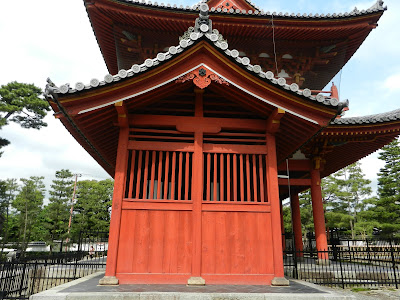Day 1 (Monday)
Some beautiful buildings in the Myoshin-ji Temple complex.
The small red Torii gates are there to prevent people from urinating on the wall. No joke. That is its explicit purpose. So if you see Torii gates on the sides of buildings you must find somewhere else to pee.
On the 25th of every month there is a massive farmer's/craft/food market at the Kitano Shrine. There's lots of delicious snacks, discount clothing, antique goods, and much more.
Bonsai/Ikebana in old ceiling tiles. This is an excellent example of mitate which is the reuse of materials for new purposes. The symbol on the ceiling tile is common to Shinto shrines and can be seen on the roofs of many temple buildings in Myoshinji and elsewhere around Kyoto. Other symbols I've seen are two cranes kissing (a family crest), or the Chrysanthemum blossom (the crest of the Imperial family).
An incredible stand at the Kitano market. All of the bowls, cups, and saucers were made by a family. These items are all made from very thin pieces of wood that have been charred and waterproofed. They are absolutely beautiful and light-weight.
We intend to visit this stand next month so that we can bring home some gifts.
























